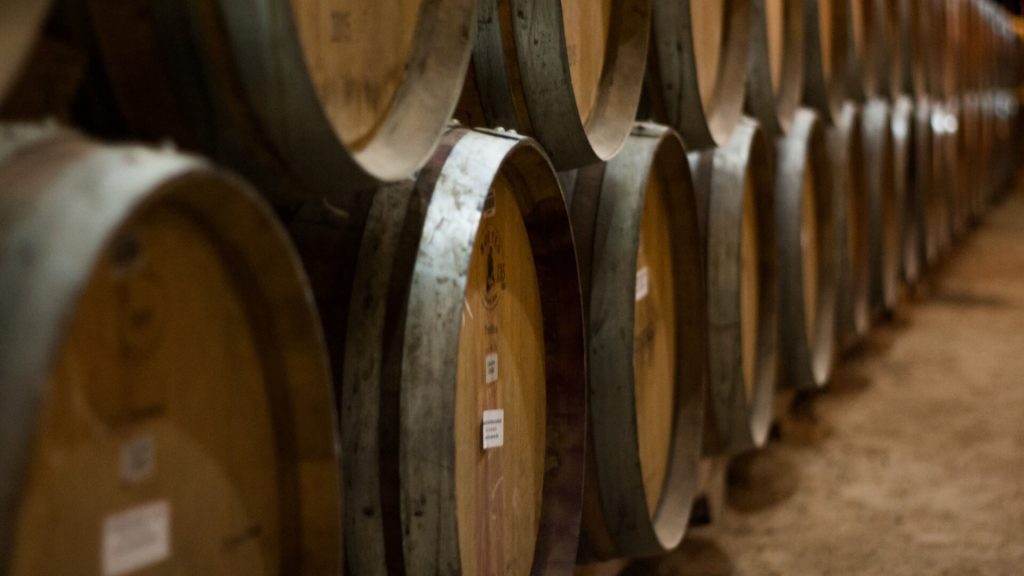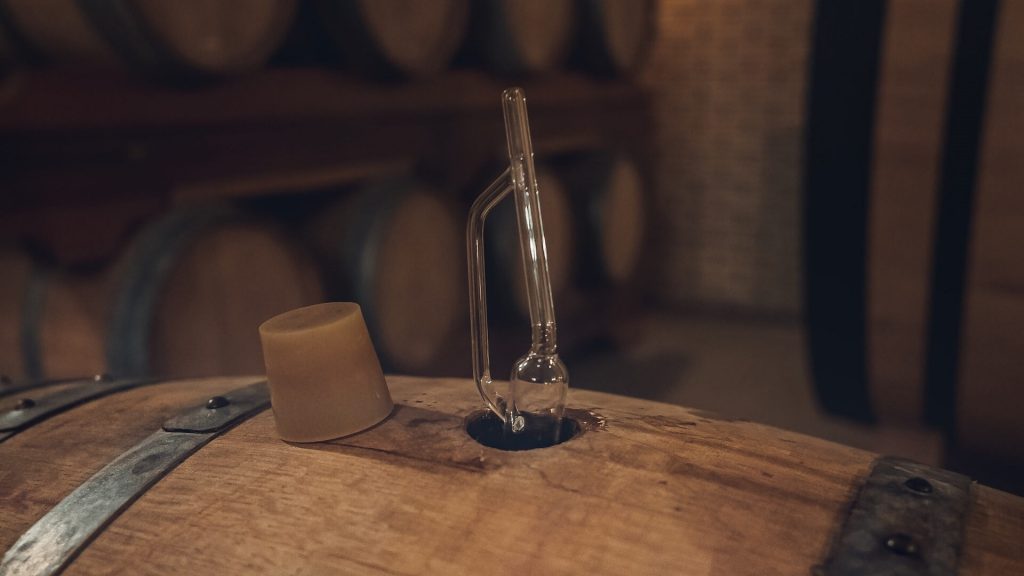Wine, an elixir that has enchanted civilizations for millennia, holds a special place in human history not just for its delightful taste but also for its remarkable ability to transform and elevate itself over time. This mesmerizing transformation, known as wine maturation, is a harmonious blend of artistry and science. In this comprehensive article, we will embark on a deep dive into the captivating world of wine maturation, exploring its intricate processes, nuanced factors, and the captivating alchemy that occurs within the confines of a bottle.
Understanding Wine Maturation

Wine maturation is a complex and intricate process wherein a youthful, vibrant wine gradually metamorphoses into a complex and harmonious masterpiece. This is a journey that can span years or even decades, and its outcome is influenced by a multitude of factors. Let’s unravel the secrets behind this mesmerizing transformation.
The Role of Oak Barrels in Wine Maturation
Few elements are as iconic and integral to the world of wine maturation as oak barrels. These are not mere containers; they are the artistic instruments upon which a winemaker’s vision takes shape. Oak imparts flavors, aromas, and textures to wine, orchestrating a symphony of tastes and fragrances.
During the maturation process, wine engages in a nuanced dance with the compounds within oak, including tannins and lignin. This interaction serves to mellow the wine’s tannins, resulting in a silkier and more refined mouthfeel. Oak also introduces a mesmerizing array of complex nuances such as vanilla, spice, and toasted notes, which layer the wine with depth and character.
Different types of oak – French, American, or Hungarian, for example – infuse distinct qualities into the wine. French oak tends to be more subtle, imparting delicate vanilla and spice notes, while American oak is bolder, often contributing robust flavors of coconut and dill. Winemakers meticulously select the type of oak and degree of toasting to achieve the desired flavor profile in the maturing wine.
The Importance of Temperature and Humidity
Temperature and humidity are pivotal factors that wield significant influence over the course of wine maturation. The wine matures best under conditions of unwavering stability; even slight fluctuations can have a profound impact on its development. Variations in temperature cause the wine to expand and contract, facilitating the entry of air into the bottle. This, in turn, can lead to detrimental oxidation and a decrease in overall wine quality.
Maintaining a moderate and consistent temperature is vital for the success of wine maturation, with the ideal range typically falling between 55°F and 65°F (13°C to 18°C). This temperature range ensures that the wine evolves gracefully without being subjected to excessive stress or shock.
Humidity levels are another critical consideration. A relative humidity of around 70% helps keep the corks in optimal condition, preventing them from drying out and allowing the unwanted intrusion of oxygen. Maintaining proper humidity is especially crucial for wines sealed with natural cork closures, as these are susceptible to drying out and letting oxygen in over time.
The Influence of Time
Time, an intangible yet potent force, lies at the heart of wine maturation. As wine rests in its bottle, a cascade of chemical reactions unfolds at a glacial pace, reshaping its character in the most subtle and profound ways. A young, exuberant wine evolves into a work of art, bursting with depth, complexity, and nuance.
The duration of maturation varies widely based on several factors, including the type of wine, grape variety, and the winemaker’s intentions. While some wines achieve their peak in just a few years, others demand decades to reveal their full potential. Patience is the virtue of those who seek the ultimate rewards of well-aged wine, as it is only with time that the transformation is truly realized.
During this period, the wine undergoes a profound metamorphosis. It softens and harmonizes, shedding youthful vigor and gaining a refined elegance. The harsh edges of tannins are rounded, and the fruit character deepens, giving way to complex secondary and tertiary aromas and flavors.
The Art of Blending
Blending is a sophisticated art form that empowers winemakers to craft wines of extraordinary balance and complexity. It entails the judicious mixing of wines from different vineyards, grape varieties, or vintages to create a final product that achieves a seamless and harmonious balance.
In the context of wine maturation, blending takes on added significance. A skilled winemaker may artfully blend younger and older wines to facilitate a graceful transition of flavors and aromas, resulting in a wine that transcends the sum of its components. This process requires a deep understanding of each wine’s character and an impeccable sense of timing to create a harmonious and balanced final blend.
Blending allows winemakers to harness the strengths of each wine, balancing out any shortcomings and amplifying their individual virtues. The result is a wine that exhibits exceptional depth, complexity, and consistency—a true testament to the winemaker’s artistry.
The Impact of Bottle Ageing
Once the wine is bottled, its maturation journey continues, albeit at a more measured pace compared to aging in oak barrels. This phase of bottle aging allows the wine to refine and integrate its characteristics further. Over time, sediment may form, often seen as a hallmark of quality in aged wines.
Sediment, comprised of color pigments, tannins, and other solids, precipitates out of the wine as it ages. This process is entirely natural and is a sign that the wine has undergone extensive maturation. While sediment may be visually unappealing, it has a crucial role in preserving the wine’s flavor and structure. Before serving an aged wine, it is customary to decant it carefully, separating the liquid from the sediment to ensure a pristine pour.
The Science Behind Wine Maturation

While wine maturation possesses an undeniable aura of artistry, it is fundamentally rooted in scientific principles. A range of chemical processes unfolds during this transformation, each contributing to the wine’s gradual evolution.
Oxidation and Reduction
Oxygen’s role in wine maturation is nuanced and delicate. Controlled exposure to oxygen can soften a wine’s tannins and amplify its bouquet, enhancing its overall character. However, excessive oxygen contact can lead to undesirable oxidation, resulting in off-flavors and spoiled wine. Winemakers must master the art of maintaining this delicate balance, allowing just enough oxygen to interact with the wine over time without crossing the threshold of deterioration.
Polymerization
Polymerization is a fascinating process that occurs within the wine as it matures. Tannins, compounds responsible for a wine’s astringency, undergo polymerization, linking together to form larger, less aggressive molecules. This transformation results in a smoother, more velvety texture on the palate, reducing the perception of astringency and improving overall mouthfeel.
Ester Formation
Esters, aromatic compounds responsible for a wine’s bouquet, play a pivotal role in wine maturation. Over time, esters develop in wine, enhancing its complexity and fragrance. These compounds are often responsible for the delightful aromas found in aged wines, imparting notes of dried fruits, flowers, spices, and other intricate scents that contribute to the wine’s overall appeal.
Acid Evolution
Wines with high acidity may undergo a gradual transformation with aging. Over time, acidity levels may mellow and harmonize, leading to a more balanced and integrated taste profile. The acidity in wine can engage in chemical reactions with other components, such as tannins and residual sugars, resulting in a smoother and more cohesive flavor profile.
Conclusion
Wine maturation is a captivating journey that seamlessly blends craftsmanship and science, all within the confines of a bottle. The interplay of oak barrels, temperature, time, and chemistry transforms a youthful wine into a symphony of flavors and aromas, waiting to be savored for years to come.
As enthusiasts of the noble grape, we have the privilege to witness this metamorphosis, knowing that each bottle holds a unique narrative waiting to unfold. Whether indulging in a young, vibrant wine or savoring the complexities of a gracefully aged masterpiece, remember that wine maturation is an exquisite testament to the patience and dedication of winemakers and the marvels of the natural world. So, raise your glass to the enchantment of aging gracefully and the sheer joy of exploring the enigmatic realm of wine maturation.

